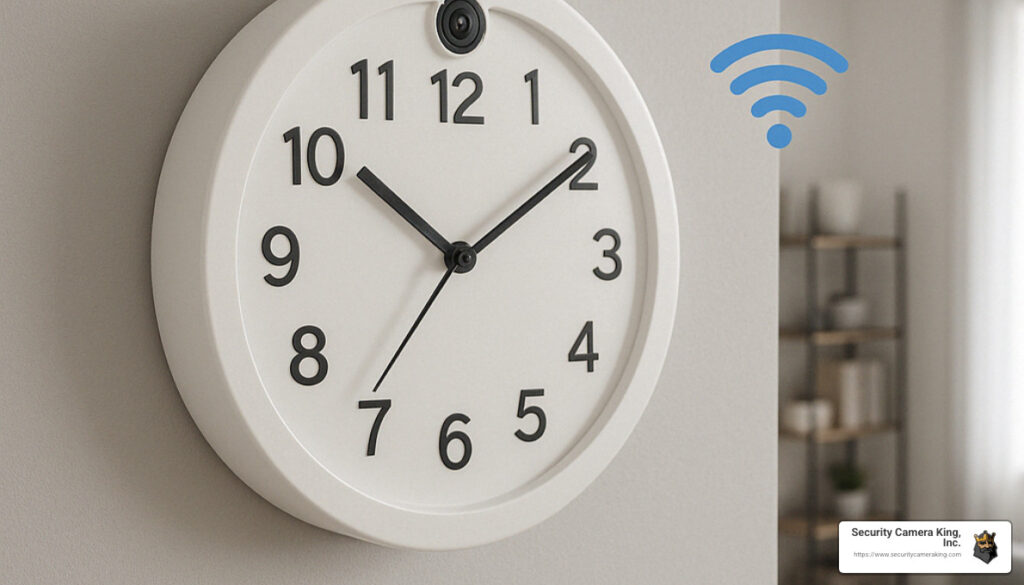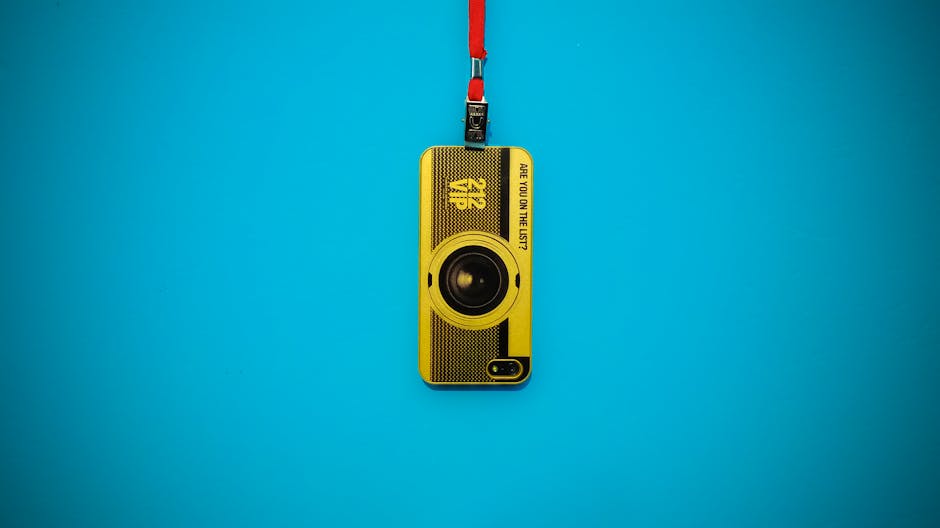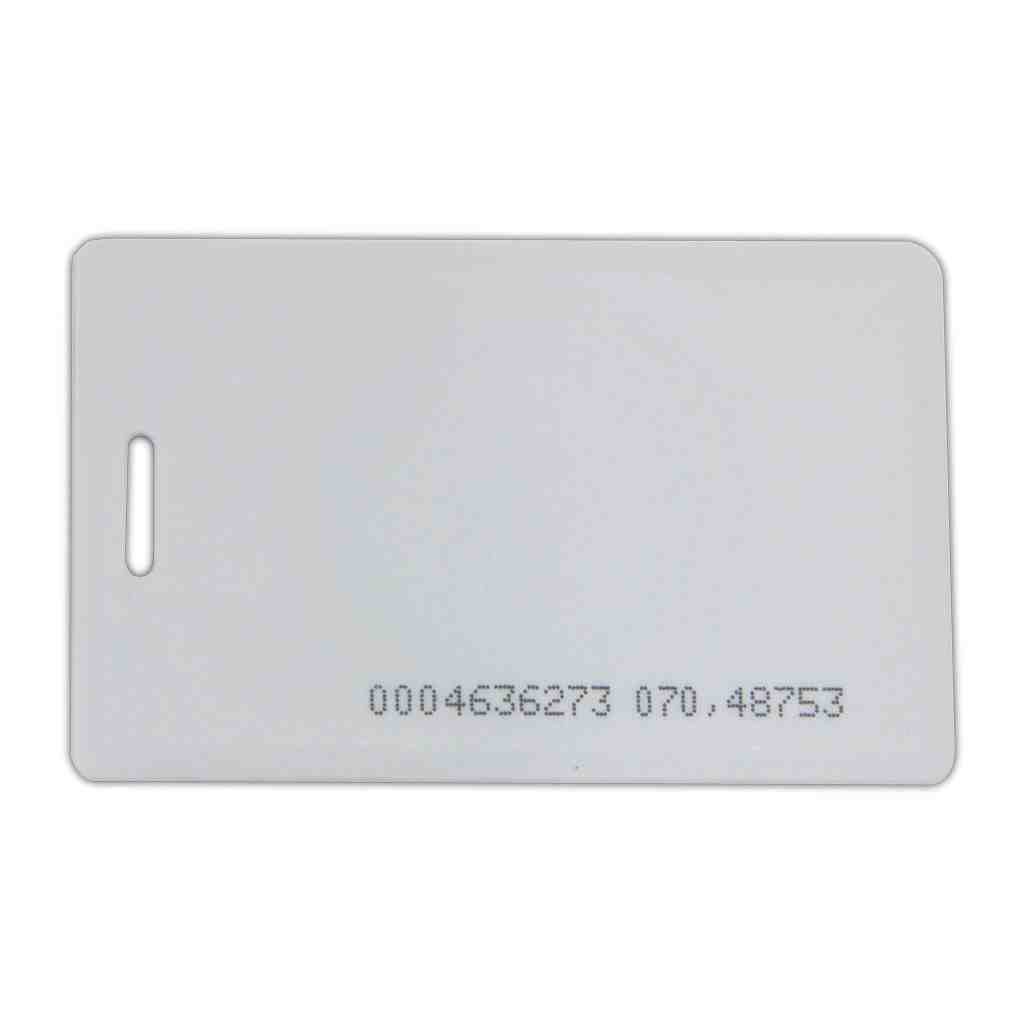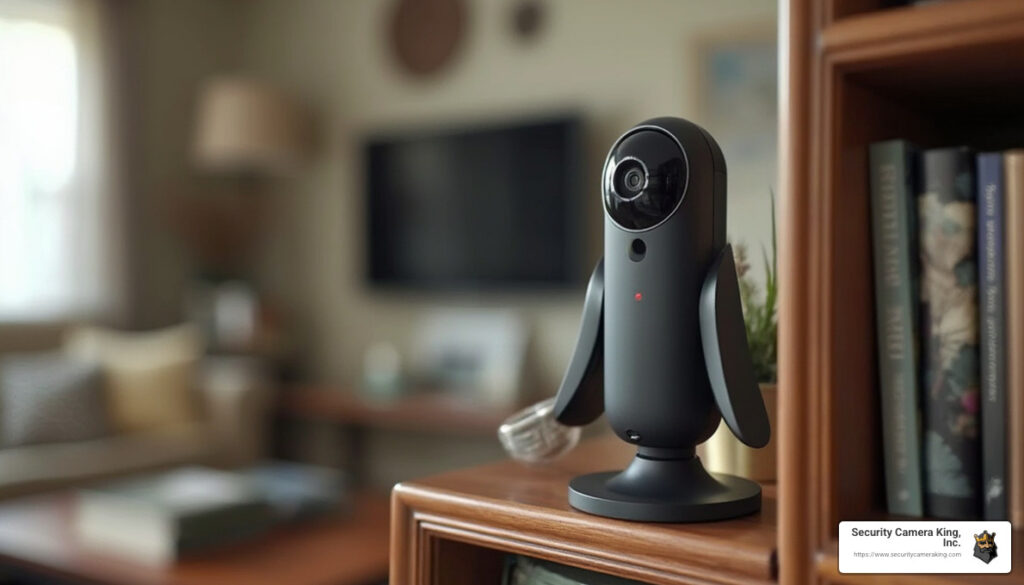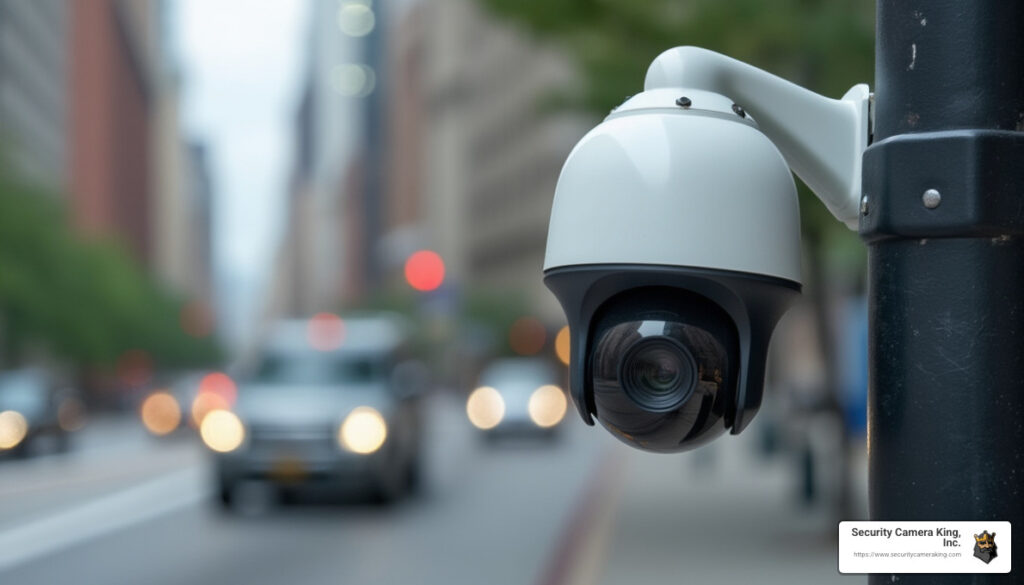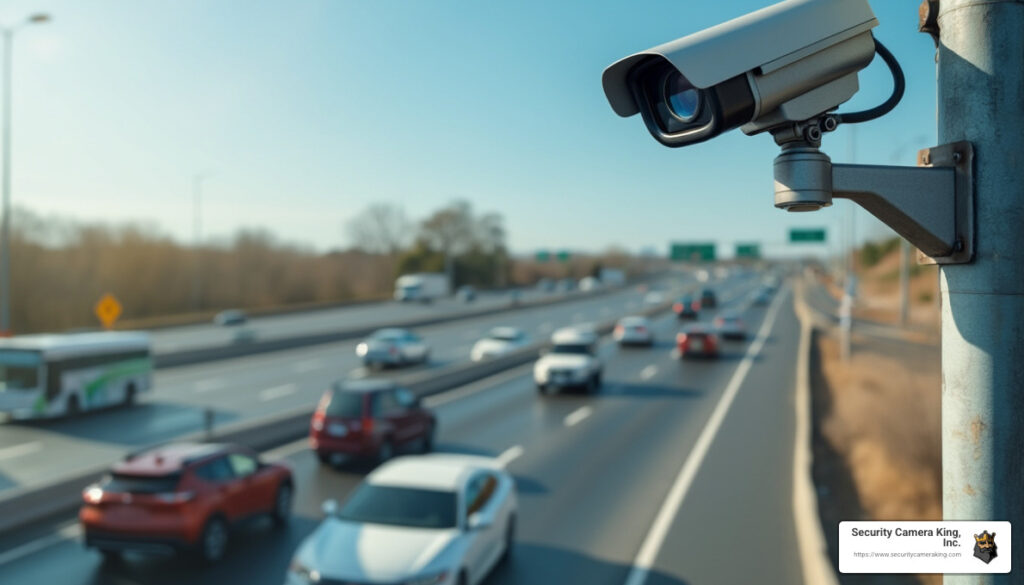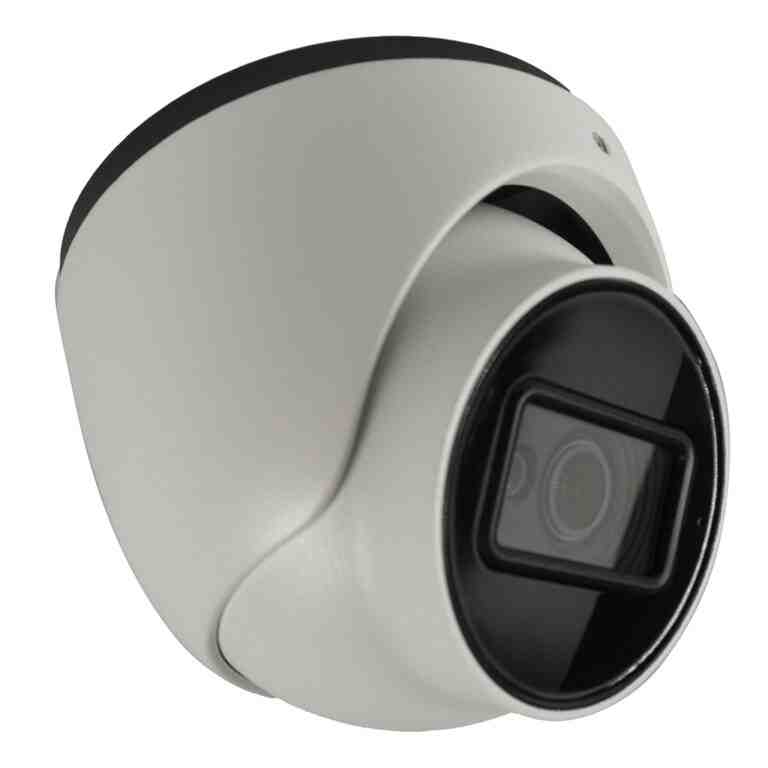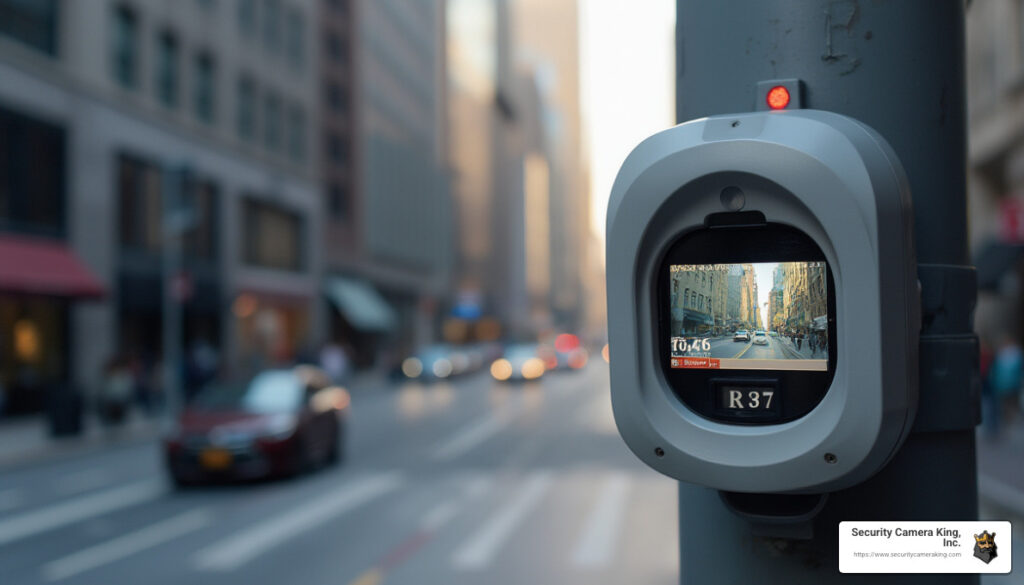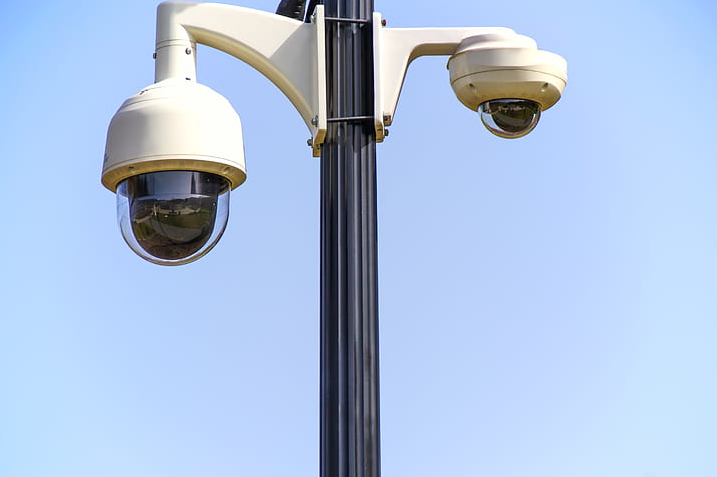Security Camera Installation: Top 10 Expert Tips 2025
Why Security Camera Installation Matters for Your Business
Security camera installation is crucial for retail managers who want to protect their stores from theft, monitor daily operations, and ensure safety for both employees and customers.
If you’re looking for quick guidance:
- Professional Installation: Recommended for complex setups (multiple cameras, advanced features).
- DIY Installation: Suitable for basic, single-camera setups (requires basic tools and skills).
- Average Cost: $100-$200 per camera installation; full systems typically range $800-$2,000.
- Setup Time: Professional installation takes half a day or less; DIY usually under an hour per camera.
Choosing the right security camera installation solution can have a massive impact on your store’s efficiency, reduce losses, and save you from headaches down the line.
I’m Brad Besner SCK, founder of Security Camera King, Inc., and I’ve spent years helping businesses get the most out of their security camera installation. I’ll share insights to ensure you make the smartest installation choices for your store.

Understanding Security Camera Installation Services
When you’re considering security camera installation, it’s important to know that not all systems—and installation services—are created equal. Choosing the right setup for your business or home often depends on your specific security needs, budget, and preferences. Let’s take a closer look at some popular security camera systems and why you might choose one over another.
Many customers first think of Analog CCTV Systems—these traditional setups use coaxial cables to transmit video footage back to a DVR (Digital Video Recorder). They’re reliable and proven, but usually offer lower image resolution compared to newer digital systems.
If you’re looking for sharper image quality and easier integration with modern technology, IP Camera Systems could be your best bet. These cameras connect directly to your network and use an NVR (Network Video Recorder). They’re ideal for businesses that require high-detail footage for identification and evidence purposes.
Then there’s the convenient option of a Wireless Camera System. Don’t let the name fool you though—they still typically need power cables, but they transmit video signals wirelessly to a receiver. These systems shine when you need flexibility in camera placement, but signal interference can become an issue, so professional setup is often recommended.
Finally, Wire-Free Camera Systems are completely battery-powered and eliminate the hassle of wiring altogether. They’re perfect for areas where running cables would be challenging or impossible.
When it comes to pricing, industry data shows that the average cost for security camera installation usually hovers around $1,297. Depending on the complexity of your system and the number of cameras you need, you might pay anywhere from around $594 to over $2,039.
The Importance of Professional Security Camera Installation
You might wonder, “Can’t I just do the installation myself?” While a DIY approach can seem appealing, professional security camera installation offers some major advantages worth considering.
With professionals, you’re getting expert system design and camera placement. They’ll ensure your security cameras have optimal coverage, leaving no critical areas unprotected. Proper wiring and cable management are also part of the package, which means a tidy, reliable setup without the headaches of tangled cables or messy installations.
One big advantage that many people overlook is knowledge of local regulations and compliance. Privacy laws and camera placement restrictions can vary depending on your location. Professional installers know these rules inside out, helping you stay on the right side of the law and avoiding potential legal issues.
Another benefit is professional mounting and weatherproofing. An improperly mounted camera can lead to poor coverage, camera damage, or even falling equipment. Professionals ensure your cameras are securely installed to withstand harsh weather conditions and potential tampering.
You’ll also benefit from expert system testing and troubleshooting. If something goes wrong, you won’t be left puzzling over manuals—your installer will expertly diagnose and resolve issues quickly. Plus, most professional installations come with warranties on the work done, giving you additional peace of mind.
As one of our satisfied clients, Dr. Andrew Goldring, put it simply, “I wish everything was this easy.” Professional installers make sure your cameras are in the best positions possible, mounted securely, and configured correctly, making your life easier and your property safer.
Here’s a quick comparison between professional and DIY installation:
| Professional Installation | DIY Installation |
|---|---|
| Expert camera placement & optimal coverage | Potential coverage gaps |
| Tidy, reliable cable management | Potential wiring errors |
| Complies fully with local regulations | Possible legal compliance issues |
| Secure, weather-resistant mounting | Risk of improper mounting |
| Quick installation (typically within half a day) | Longer installation time, especially for beginners |
| Warranty on installation work | No installation warranty |
Beyond just installing the cameras, a professional installer will handle technical aspects such as integration with existing security systems and ensuring there’s adequate power supply for each camera. For systems with three or more cameras, you’ll likely find that professional installation is well worth the upfront investment.
DIY vs Professional Security Camera Installation
So, should you tackle the installation yourself or hire professionals? It largely depends on your technical skills, available time, and budget.
On the DIY side, you’re saving on labor costs—typically around $100 per camera. You also get the flexibility of doing the installation at your own pace, and the satisfaction of completing the project yourself. However, without professional experience, you risk errors that could affect the performance of your cameras or even lead to equipment damage. DIY installation can also eat up your valuable time, especially if you’re not familiar with the technology.
Professional installation, on the other hand, provides expertise and convenience. A skilled technician from Security Camera King, for example, can usually complete a full installation in less than a day. You also get the reassurance of a warranty on their work and ongoing support if you have questions down the road.
For a smaller, straightforward one- or two-camera setup, DIY might be manageable. But if you’re planning on installing multiple cameras or complex systems, professional installation pays off. According to the Bureau of Justice Statistics, approximately 2.5 million home intrusions occur every year in the United States. Ensuring proper security camera installation isn’t just about convenience; it’s about safety and security for your property, your business, and your loved ones.

Key Factors to Consider When Choosing an Installation Service
Finding the right security camera installation service is essential for getting the most out of your security system. But how do you know you’re choosing the right provider for your needs?
First off, experience and certifications matter—a lot. A seasoned installer who knows the ropes can make the difference between a smoothly-running system and constant headaches later. Here at Security Camera King, we’re proud of our extensive industry experience and the comprehensive training of our team. When you work with us, you’re partnering with pros who’ve done this day in and day out.
Don’t just take our word for it—check out customer reviews and testimonials. Happy customers speak volumes about the quality of service you can expect. As one of our clients, Bill W., put it: “Exceeded our expectations.” That’s exactly the kind of feedback you want from a company you trust with your security.
You’ll also want to ensure the installer is familiar with the types of cameras and systems you’re considering—whether it’s IP cameras, analog CCTV, or wireless setups. The right installer will help you choose the best technology for your situation and install it seamlessly. At Security Camera King, we offer a wide variety of camera systems, ensuring we can tailor the installation perfectly to your specific needs.
Another crucial factor is post-installation support. Even the best-installed systems occasionally run into issues, so it’s reassuring to have a company that stands by their work. At Security Camera King, we provide ongoing support to quickly address questions and fix potential issues, ensuring your system stays up and running smoothly.
Make sure your provider offers solid warranties and guarantees. Professional installations typically include warranties that cover both equipment and labor. If something goes wrong, you’re covered—something that’s usually missing with DIY setups.
Clear communication and cost transparency are essential. No one likes hidden fees or surprise charges. A reputable provider will give you a detailed and straightforward estimate upfront. While the average cost for a professional installation is usually around $100 per camera, a complete system typically ranges between $800 to $2,000, depending on complexity.
Lastly, consider choosing a company with strong local knowledge. Installers familiar with your area will understand specific security concerns and local regulations. Since we’re based in Boca Raton, FL, we’re well-versed in the unique security challenges faced by our community.

Questions to Ask Your Security Camera Installer
Before you settle on a provider for your security camera installation, make sure you’re asking the right questions. Think of it like a job interview—after all, you’re hiring someone to safeguard your property and peace of mind.
First, check if they’re licensed and insured. This protects you from any accidental damages during installation. It’s always better to be safe than sorry.
Ask if they can provide references from similar installations. Experienced installers should proudly share a few examples of their successful work. This helps build trust and confidence in their abilities.
You’ll also want to understand their installation process. Knowing exactly what to expect upfront means no unpleasant surprises later. Find out how long the installation will take, too. Most installations can usually be wrapped up from a few hours to half a day—but it’s always good to double-check.
Another key question is whether they offer training on using the new system. The fanciest cameras in the world won’t help much if you don’t know how to use them effectively. Good installers will take the time to ensure you’re comfortable operating your new setup.
Don’t forget to ask about their installation warranty. A solid guarantee means the installer stands by their workmanship and offers protection against potential installation-related issues. Equally important is to get a clear picture of what ongoing maintenance is required to keep your system in peak condition.
It’s also helpful to ask how they handle troubleshooting and service calls. A responsive provider will save you plenty of stress down the line. Likewise, requesting documentation of the installation ensures you have a clear record for future upgrades or repairs.
Finally, discuss the specific security features their cameras offer, such as night vision, motion detection, and remote viewing capabilities. These features significantly improve the effectiveness and convenience of your security system.
To make things even easier, we’ve prepared a handy infographic summarizing the top questions to ask your installer:

By keeping these key factors and questions in mind, you’re well on your way to choosing the perfect installation service. At Security Camera King, we’re always here to help guide you through this process and ensure you get the most from your security camera installation investment.
Exploring Different Types of Security Camera Systems
When you’re planning your security camera installation, understanding the various camera systems available helps you make the smartest choice for protecting your home or business. Let’s explore the main types of security camera setups and what each one brings to the table.
Wired vs Wireless Security Camera Systems
One of the first big decisions you’ll make for your security camera installation is choosing between wired and wireless systems. Each option has its own strengths, so let’s break down what you need to know.
Wired security camera systems typically connect cameras through physical cables. These include analog systems using coaxial cables connected to Digital Video Recorders (DVRs), and modern IP systems using Ethernet cables linked to Network Video Recorders (NVRs). Wired setups offer rock-solid reliability because signals travel over cables, eliminating wireless interference issues. They’re also less vulnerable to hacking attempts, making them ideal for permanent, larger installations or businesses that prioritize maximum security. However, wired systems require more effort during installation—think cable routing and securing those cables neatly out of sight.
Wireless security camera systems, on the other hand, transmit video signals through Wi-Fi or other wireless signals. While these cameras still need power—from a nearby outlet or batteries—they simplify installation dramatically. If you rent your property or prefer not to drill holes and run cables, wireless could be a perfect fit. But keep in mind, wireless cameras have limitations. They can experience occasional signal interference from other devices, and their range depends on the strength and reach of your wireless network. Proper setup and security settings are key to avoiding hacking risks with wireless cameras.
Here’s a handy side-by-side comparison to help you visualize the differences between wired and wireless options:
| Feature | Wired Systems | Wireless Systems |
|---|---|---|
| Reliability | Very reliable—minimal interference | Can experience occasional interference |
| Installation Effort | More complex (cable routing) | Easier and quicker (minimal wiring) |
| Power Source | Constant power supply | Need power outlet or batteries |
| Signal Range | Unlimited with proper cabling | Limited by wireless range |
| Security | More secure against hacking | Need careful security configuration |
| Expandability | Requires additional wiring | Easier to add more cameras later |
| Ideal Use | Permanent or large-area setups | Temporary setups, small areas, renters |
Your choice depends on your property’s specific needs and how much installation work you’re comfortable tackling—either yourself or through a professional installation service.
Choosing the Right Security Cameras for Your Needs
Once you’ve settled on wired or wireless, the next step in your security camera installation journey is selecting the best camera types and features for your space. Let’s take a warm, friendly tour through the most popular camera options and when you might choose each one.
A bullet camera is the classic outdoor camera—long, cylindrical, and obvious. Its visibility can deter potential intruders, and it’s built to withstand the elements. Bullet cameras are perfect for monitoring driveways, parking lots, or warehouse entrances, offering clear images at a distance.
Dome cameras, on the other hand, are discreet and blend nicely indoors. Their rounded, inconspicuous design makes it difficult for intruders to know exactly where they’re pointing, adding an extra layer of deterrent. Retail spaces, offices, or any indoor location needing subtle surveillance typically choose dome cameras.
Have a large area to monitor? PTZ (Pan-Tilt-Zoom) cameras can be remotely controlled to cover wider spaces. You can pan across a parking lot, tilt to view multiple floors, and zoom in to clearly see details. They’re ideal if you need flexible monitoring and want fewer cameras overall.
For expansive indoor spaces like warehouses, retail floors, or large rooms, Fisheye or 360° cameras give you full-room coverage with just one camera. Their wide-angle lens offers a panoramic view, ensuring no corner goes unnoticed.
If tracking vehicles is part of your security plan, specialized License Plate Recognition (LPR) cameras capture clear license plate images, day or night. Use these at entrances and parking areas to keep tabs on vehicles entering your property.
In addition to camera types, don’t forget essential features that boost your cameras’ effectiveness. High resolution matters—modern cameras typically offer crisp 1080p HD or even ultra-clear 4K video. Consider your camera’s field of view, which determines how wide an area the camera covers. Wide-angle lenses capture more space, but narrower lenses can provide better detail further away.
For nighttime security, look for cameras with built-in night vision powered by infrared LEDs. This ensures clear images even in complete darkness. Motion detection helps record only when activity happens, saving storage space and allowing easy reviewing if an incident occurs.
Outdoor cameras should have a high weather-resistance rating (IP65 or IP66) to handle rain, snow, or harsh sunlight. Some cameras also offer two-way audio, letting you communicate through your camera—ideal for front-door cameras or quick check-ins.
Finally, consider how you’ll store your video footage. Cameras often support local storage (on SD cards or NVRs) or cloud-based storage, which usually involves a subscription fee.

By taking the time to understand your options for your security camera installation, you’ll confidently choose a camera system perfectly suited to your property and security goals.
Legal Considerations for Security Camera Installation
Installing security cameras is an excellent way to boost safety at your home or business. But before you dive in, it’s important to understand the legal side of things. Nobody wants a security upgrade to turn into a legal headache, right?
In the United States, the Fourth Amendment protects individuals against unreasonable searches, meaning there are important limitations on how and where you can use your security cameras. Generally, businesses and homes have substantial freedom to monitor their own properties, but there are still a few important guidelines to follow.
First, let’s talk about public vs. private areas. Cameras are typically fine in public or commonly accessible spaces—think front entrances, driveways, or store aisles. But placing cameras in private areas where people reasonably expect privacy—like restrooms, changing rooms, bedrooms, or private offices—is definitely off-limits. Nobody appreciates Big Brother in those private moments!
Another important consideration is audio recording. Did you know that in many states, recording someone’s voice without their consent can land you in hot water? Some security cameras come with built-in microphones, but unless you’ve got explicit consent or proper legal authorization, it’s best to disable those audio features to avoid trouble.
It’s also a good idea to be aware of any notification requirements in your area. Certain jurisdictions require clear signage indicating that video surveillance is in use. Apart from keeping you compliant with local laws, these signs also help deter potential wrongdoers. Win-win!
When it comes to residential installations, being mindful of your neighbors’ privacy is crucial. Make sure your cameras focus strictly on your own property. Capturing your neighbor’s backyard or private spaces could lead to complaints or even legal disputes. A good rule of thumb: if you’d feel uncomfortable being recorded in a certain area, avoid pointing your cameras there. And chatting openly with neighbors about your camera placement can help avoid misunderstandings (and awkward backyard barbecues!).
Businesses should also be considerate about workplace surveillance. Cameras are generally acceptable in common work areas or places where safety and security are essential. However, steer clear of break rooms, locker rooms, bathrooms, or other spaces where employees expect privacy. Respecting your team’s trust goes a long way toward a healthy workplace environment.
Additionally, think about how you handle the data your cameras capture. Establish clear data protection and storage policies that comply with local regulations. Be clear about who can access footage, how securely it’s stored, and how long you keep it. Limiting access to authorized individuals and regularly deleting recordings you no longer need helps protect everyone’s privacy—yours included.
Ensuring Compliance with Privacy Laws
To ensure your security camera installation remains on the right side of the law (and your neighbors and coworkers stay happy!), consider taking these simple yet important steps:
-
Before installation, perform a quick privacy impact assessment. Take a walk around your property to identify any areas where your cameras might infringe on someone else’s privacy, and adjust your plans accordingly.
-
Always avoid placing cameras in private areas—bathrooms, changing rooms, bedrooms—anywhere people reasonably expect privacy is strictly off-limits.
-
Double-check your camera angles to ensure you’re respecting property boundaries. Keep the view focused on your own space and away from your neighbors’ windows or private areas.
-
Post clear signage indicating that video surveillance is active. This not only keeps you legally compliant but might just scare off troublemakers.
-
Remember to keep your footage secure. Properly protected data storage prevents unauthorized access or misuse of recordings.
-
Establish clear retention policies. Decide how long footage needs to be kept and securely delete older recordings when they’re no longer useful.
-
Limit footage access strictly to authorized personnel to maintain privacy and data security.
-
Lastly, stay in the loop with current privacy laws. Laws can evolve, and regularly reviewing your practices ensures you’re always compliant.
Following these guidelines will help you use your cameras responsibly and legally, giving you peace of mind along with improved security.
Want more details on privacy and surveillance laws? You can check out this helpful external resource explaining how the Fourth Amendment relates to privacy expectations: US Constitution. (2020). Amdt4.2.2.2 Katz and the Adoption of the Reasonable Expectation of Privacy Test.

Maximizing Performance and Coverage
Getting the most from your security camera installation isn’t just about picking high-quality equipment—it’s also about making smart choices when it comes to placement. Thoughtful positioning makes a huge difference in how effectively your cameras protect your property and provide crystal-clear footage when you need it most.
Tips for Optimal Camera Placement
When planning your camera locations, one of the first things to consider is camera height. Ideally, mount cameras 8-10 feet off the ground indoors. Outside, a little higher—10 feet or more—is even better to prevent vandalism and keep your gear safe from weather damage. (After all, you don’t want your expensive security camera system becoming someone else’s ladder-accessible souvenir.)
Whenever possible, place outdoor cameras under shelter or protective eaves. A sheltered position not only protects your cameras from rain, wind, and harsh weather, but it also cuts down on glare from direct sunlight. Bright sunlight hitting a camera lens directly can create a blinding effect, making your footage less useful and more “abstract art.”
Speaking of sunlight—lighting conditions are crucial for great video quality. Avoid pointing your cameras directly toward strong lights or reflective surfaces. Before you finalize positions, check how your chosen spots look at different times of day. Consider sunrise and sunset, as these times can introduce glare and shadows you might not initially expect.
Of course, even the best cameras can’t see through walls or trees. It’s vital to ensure each camera has an unobstructed view. That something clear today might be blocked tomorrow—trees grow and seasonal decorations appear. Regularly checking camera views can help you maintain optimal angles and avoid frustrating gaps in coverage.
When deciding exactly where to place your cameras, prioritize monitoring entry points. Burglars typically target doors, windows, and other access areas. According to our research, about 34% of burglars are after large electronics like TVs, while another 31% target smaller valuables. So, covering these potential entry areas can mean the difference between catching a thief red-handed or scratching your head wondering how they got in.
Inside your property, corner mounting is often your best bet. You can capture a wide viewing angle from corners, making it easy to keep an eye on hallways, common areas, or valuable displays in stores. Strategically placed indoor cameras can tell you exactly what happened—and who did it—in a pinch.
There’s always a balance in deciding whether your cameras should be visible or concealed. A clearly visible camera can stop trouble before it starts, acting as a powerful deterrent. On the other hand, subtly placed cameras are great for discreet monitoring and catching thieves in action. Consider your primary goal—whether prevention or evidence gathering—to determine which approach is best for you. (Or, better yet, why not do both?)
It’s also essential to understand your camera’s specific range and angle. Bullet cams, dome cams, and PTZ (Pan-Tilt-Zoom) cameras each have unique viewing angles and coverage distances. Matching camera capabilities to their placement locations prevents blind spots and ensures every critical area stays monitored.
For wired setups, always protect your cables and wiring. Conceal wires along walls, molding, or building features when possible. Exposed cables invite tampering or accidental damage, and untangling a messy wiring job later is nobody’s idea of fun.
Finally—and maybe most importantly—test your camera positions before committing permanently. Temporarily install your cameras and review footage at different times of the day and night. Testing helps guarantee that your investment pays off with clear, reliable video footage exactly when you need it most.
One of our happy customers followed these straightforward placement tips and quickly saw fantastic results:
“After repositioning my cameras based on Security Camera King’s advice, I was able to identify a package thief who had been targeting my neighborhood for weeks. The clear footage led to an arrest within days.”
Now that’s peace of mind worth aiming for.

Maintenance and Upkeep of Your Security Cameras
Like any valuable equipment, your security camera installation needs a little TLC now and then. Regular maintenance is crucial—it ensures your cameras stay sharp, reliable, and ready for action whenever you need them.
Start by giving your cameras some regular attention with gentle cleaning. Dust, dirt, pollen, and even spiderwebs can build up over time, making your footage look blurry or dim. A simple wipe-down of camera lenses and housings using a soft microfiber cloth and a mild cleaning solution does wonders. Outdoor cameras especially benefit from a quick clean every few months, or even more often if your area gets dusty or pollen-heavy.
While you’re up there, take a moment to check and secure your camera mounts. Weather conditions, vibrations, or just regular wear and tear can loosen mounting screws, nudging your cameras out of their optimal positions. A quick tightening session every few months prevents this—plus, it saves you from ending up with footage of the neighbor’s tree instead of your driveway.
If you’ve got a wired security system, don’t forget to regularly inspect cables and connections. Watch for any signs of damage, wear, corrosion, or interference from pests. Make sure everything stays snugly connected and protected from the elements—keeping your security steady and reliable, rain or shine.
Your cameras run on software, too. Firmware and software updates aren’t very exciting, we get it—but they’re essential. These updates provide important security patches, bug fixes, and new features that keep your cameras working smoothly. Many newer systems can update automatically, but it’s always good to check periodically to confirm everything’s current.
Your security cameras are only useful if they notice what’s going on. So, periodically test motion detection and alert notifications by doing a quick walk-through of your camera zones. This ensures alerts come through instantly when something important happens. It’s a simple step that helps you sleep better at night.
Power sources also need a little attention. For battery-powered cameras, keep an eye on battery levels and replace them as needed. Wired systems should have their power sources checked routinely, making sure everything’s plugged in securely and protected from surges or other electrical issues.
Video footage can pile up quickly, eating through your storage. Regularly review your storage capacity, adjusting your recording settings if necessary. Maybe switch to motion-based recording instead of continuous recording or consider upgrading to a larger storage solution. You’ll thank yourself later when you actually need that footage!
Changing seasons often mean changing views. Leaves fall, bushes grow—and suddenly your camera that’s perfectly positioned in summer might be blocked by foliage in spring. Take a moment each season to check and adjust camera angles if needed, ensuring unobstructed views year-round.
If you use remote viewing, and chances are you do, regularly verify that your remote access is working properly. There’s nothing worse than finding out your cameras are offline when you’re away and really need them. Open up your mobile app periodically to confirm everything’s running smoothly.
Even with diligent DIY maintenance, it’s a smart idea to arrange a yearly professional inspection, especially if your system includes multiple cameras or complex wiring. Professional technicians (like our friendly team here at Security Camera King, Inc.) can spot potential problems early and ensure your system is optimized to deliver peak performance all year round.
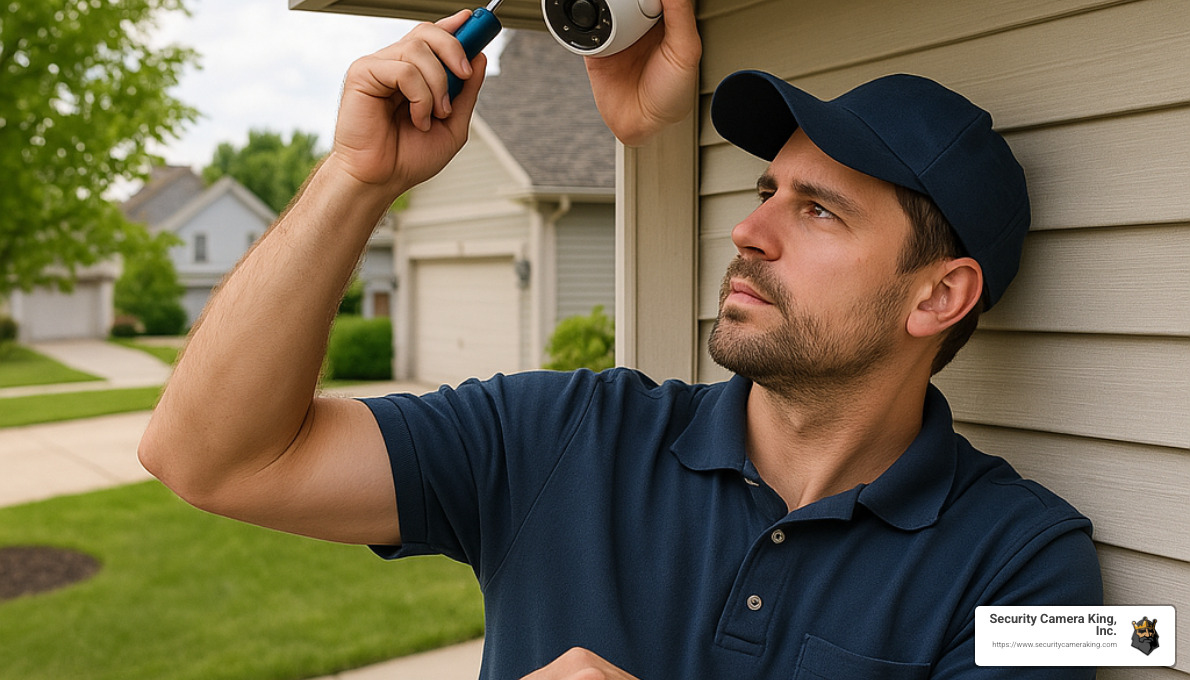
Troubleshooting Common Issues
Even with proper maintenance, you might run into a hiccup or two with your security camera installation. Here’s how to tackle some of the most common issues.
Blurry or cloudy images? Usually, this simply means your lenses need a clean or some adjustment. Wipe the lens gently, adjust the focus if possible, and check for condensation behind the lens. Ensuring proper weatherproofing helps prevent moisture from sneaking in.
If your night vision seems off—maybe the infrared (IR) lights aren’t as sharp as they should be—check if something nearby is reflecting IR light back into the lens. Moving objects like plants or repositioning your camera slightly can help clear things up.
Connectivity problems often plague wireless cameras, and it usually comes down to interference or distance from your Wi-Fi router. Try repositioning your router, adding Wi-Fi extenders, or adjusting channels to improve your wireless signal. If you have wired cameras, double-check cable integrity to make sure nothing’s damaged or disconnected.
Are you receiving too many false motion alerts? Trees blowing, cars passing, or shadows moving across the pavement can trigger unnecessary alerts. Adjust your camera settings to lower sensitivity or set specific detection zones where alerts really matter—like entrances or windows.
If your storage fills faster than you’d like, adjust your camera’s recording settings to only activate with motion detection, lower resolution (if you don’t need super-high clarity), or upgrade to a larger storage option like an NVR or cloud storage.
Finally, if a camera won’t power on, double-check connections or outlets, switch batteries if it’s battery-powered, and verify PoE (Power over Ethernet) switches or injectors if you use them. System lagging or freezing may indicate your recorder is overloaded—try limiting live-view streams or upgrading your system’s processing power.
Here’s a tip from one of our customers who recently faced wireless connectivity issues:
“After experiencing frequent disconnections with my wireless cameras, Security Camera King’s support team helped me identify interference from nearby devices. After repositioning my router and adjusting channel settings, my system has been rock-solid for months.”
Keeping these tips handy and staying proactive with regular maintenance and troubleshooting ensures your security cameras remain reliable, effective, and ready when you need them most.
Conclusion
When it comes to choosing the right security camera installation service, the decision you make directly impacts how effective your security system will be. Whether you’re safeguarding your home, protecting a busy retail store, or overseeing a large commercial property, selecting between professional installation and DIY can dramatically influence the system’s performance, reliability, and ease of use.
Professional installation is highly recommended if you’re looking at a complex setup involving multiple cameras, tricky wiring, and advanced features. Professionals ensure optimal camera placement, proper wiring and cable management, and maximum coverage—so your system works exactly as intended from day one. You also benefit from their expertise in legal compliance, avoiding common installation mistakes, and receiving warranties and ongoing support.
On the other hand, if your security needs are simpler—perhaps just one or two cameras—and you’re comfortable handling basic tools and tech tasks, a DIY installation might be suitable. Just remember, DIY requires careful planning, a bit of technical know-how, and could take longer than you’d expect. But hey, there’s nothing like the satisfaction of successfully completing a project yourself, right?
Of course, no matter how you choose to install your cameras, keeping privacy considerations front and center is essential. Understanding your local laws and regulations, placing cameras responsibly to avoid private areas (whether your own or your neighbor’s), and clearly communicating the presence of cameras through visible signage will help you steer clear of legal complications.
Regular maintenance is another key factor to keep your system working its best for years to come. Simple tasks like periodic lens cleaning, cable checking, software updating, and occasional testing of your alerts and storage can prevent headaches down the road. A little upkeep now saves lots of frustration later—trust us on this one!
Strategic camera placement is also crucial. Mount your cameras high enough to avoid tampering, under shelter to protect them from weather, and in spots that give you clear, unobstructed views of key areas such as entrances, exits, and valuable items. Good placement can mean the difference between capturing crystal-clear footage or staring at a frustrating blur.
As Barry T., one of our happy customers, shared:
“Awesome company. From sales to support, they’ve been there every step of the way.”
At Security Camera King, Inc., our goal isn’t just installing cameras—we’re helping you safeguard what matters most. With countless home invasions and business burglaries reported annually, investing in a properly installed security system is more than just smart—it’s essential for your peace of mind.
For more detailed guidance on installing a video surveillance camera system, check out our comprehensive guide here.

If you’d like expert advice custom to your unique security needs, our friendly team at Security Camera King, Inc. is here to help. With our reliable products, industry-leading technical support, and a passion for exceptional customer service, we’re committed to making your security camera installation experience smooth, stress-free, and effective.
Reach out to us today—let’s start protecting your property together!


